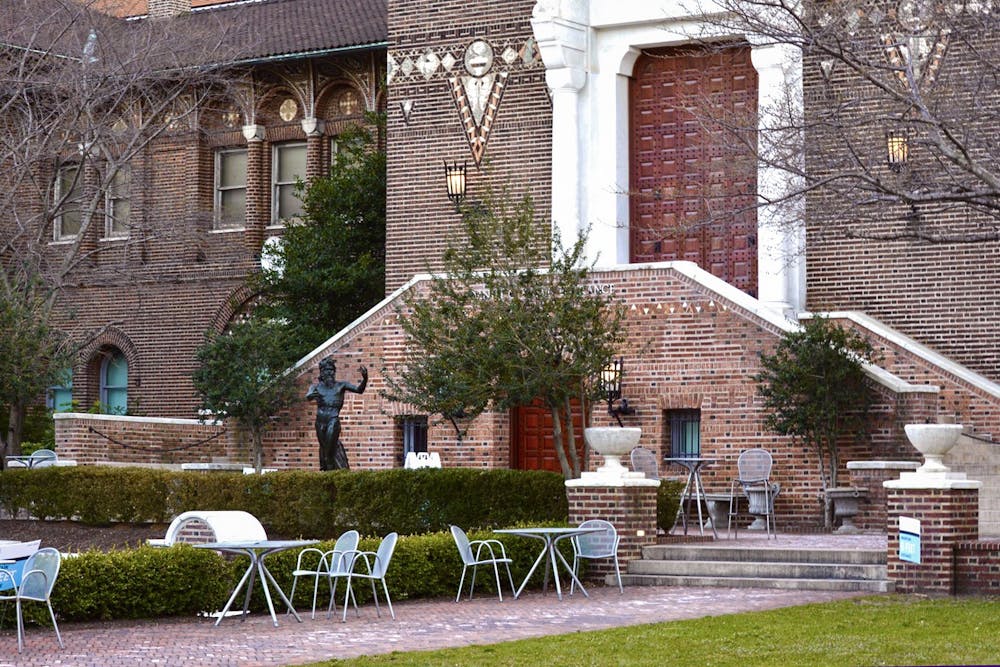
The remains of at least one child killed in the 1985 MOVE bombing were transferred back and forth from Penn to Princeton for 36 years.
Credit: Navraj SinghThe Penn Museum and University administrators issued a second apology to the Africa family and Penn community members for housing the remains of at least one child killed in the 1985 MOVE bombing, and committed to a comprehensive review of its possession of the remains, following nationwide coverage and uproar.
The University committed to a "respectful, consultative resolution" with the goal of reuniting the remains with the Africa family, according to an email sent Wednesday afternoon to undergraduates from Provost Wendell Pritchett and Penn Museum Director Christopher Woods.
"While the remains recovered from the MOVE house were not part of the Museum collection, it could not be clearer that this same standard should be applied here as well — these remains should be returned to the Africa family as soon as possible," the email reads. "The research of our physical anthropologists was done in the interests of serving our community, but by any measure 36 years is far too long to have waited."
The remains were previously in the custody of now-retired professor Alan Mann, who obtained the remains from the city in the 1980s after the Philadelphia Medical Examiner’s Office asked for assistance in identifying them. Mann later studied the remains with Janet Monge, curator of the Penn Museum's physical anthropology section, BillyPenn previously reported, before taking them with him to Princeton University. The remains, a pelvic bone and a femur, were transferred back and forth from Penn to Princeton for over 35 years.
The remains were most recently displayed in an instruction video for Coursera in an online Princeton course series titled "Real Bones: Adventures in Forensic Anthropology," in which Monge and an undergraduate student examine the remains and attempt to determine the age of the bones.
The video was removed from Coursera as of earlier this week, and the course has now been suspended, according to the email.
Pritchett and Woods admitted that while classes in forensic science require human remains to teach the next generation of forensic specialists, there is an "ethical imperative" to show respect to family survivors and receive informed consent by the person before death or by the family afterward.
"Regretfully, this did not happen in this case — and it was a serious error in judgment to use these remains in a class of any kind, especially given the extreme emotional distress in our community surrounding the 1985 bombing of the MOVE house," the email reads. "Unquestionably, the decision to use the remains in this way has torn at old wounds that our city and community have long sought to heal."
The identity of the remains has still not been confirmed, according to the email.
A forensic anthropologist hired by the MOVE Philadelphia Special Investigation Committee identified some remains as belonging to a 12-year-old victim known as Delisha, and a 14-year-old victim known as Tree, however. Woods, who assumed his position as director of the Penn Museum on April 1, has also told The New York Times that the remains were sent to Mann on April 18.
Members of MOVE — a Black liberation advocacy group whose home on Osage Avenue in West Philadelphia was bombed by the Philadelphia city government in 1985 — have accused the City of Philadelphia and the Penn Museum of mishandling the remains of at least one child who died in the bombing, and rejected the Penn Museum's previous apology at a news conference on Monday. The bombing had killed 11 people, including five children aged seven to 13, and destroyed 61 homes in the neighborhood, leaving 250 local residents without a home.
As stated in a previous announcement from Pritchett and Penn President Amy Gutmann, the University hired attorneys Joe Tucker and Carl Singley of the Tucker Law Group to investigate how the Penn Museum came in possession of the remains and how they were used for nearly four decades. This report will be shared with the Penn community, Wednesday's email vowed, with the intention that "nothing of this nature is repeated in the future."
Penn Museum workers have known for years that the Museum housed remains of a MOVE bombing victim, Woods previously told The New York Times. Woods learned about the MOVE remains as the Museum was facing harsh criticism for its possession of the Morton Cranial Collection — which holds the skulls of 14 Black Philadelphians whose remains were robbed from their graves in the 19th century — and it announced plans to repatriate the collection. The Penn Museum had apologized for its possession of the remains.
In Wednesday's email, Pritchett and Wood wrote that the Penn Museum is committed to reassessing its practices of collecting, stewarding, displaying, and researching human remains. It will also review how human remains are used in teaching, and review the holdings and collection practices of its physical anthropology section.
"We must constantly bear in mind the fact that human remains were once living people, and we must always strive to treat them with the dignity and respect that they deserve," the email reads.
The Daily Pennsylvanian is an independent, student-run newspaper. Please consider making a donation to support the coverage that shapes the University. Your generosity ensures a future of strong journalism at Penn.
Donate




